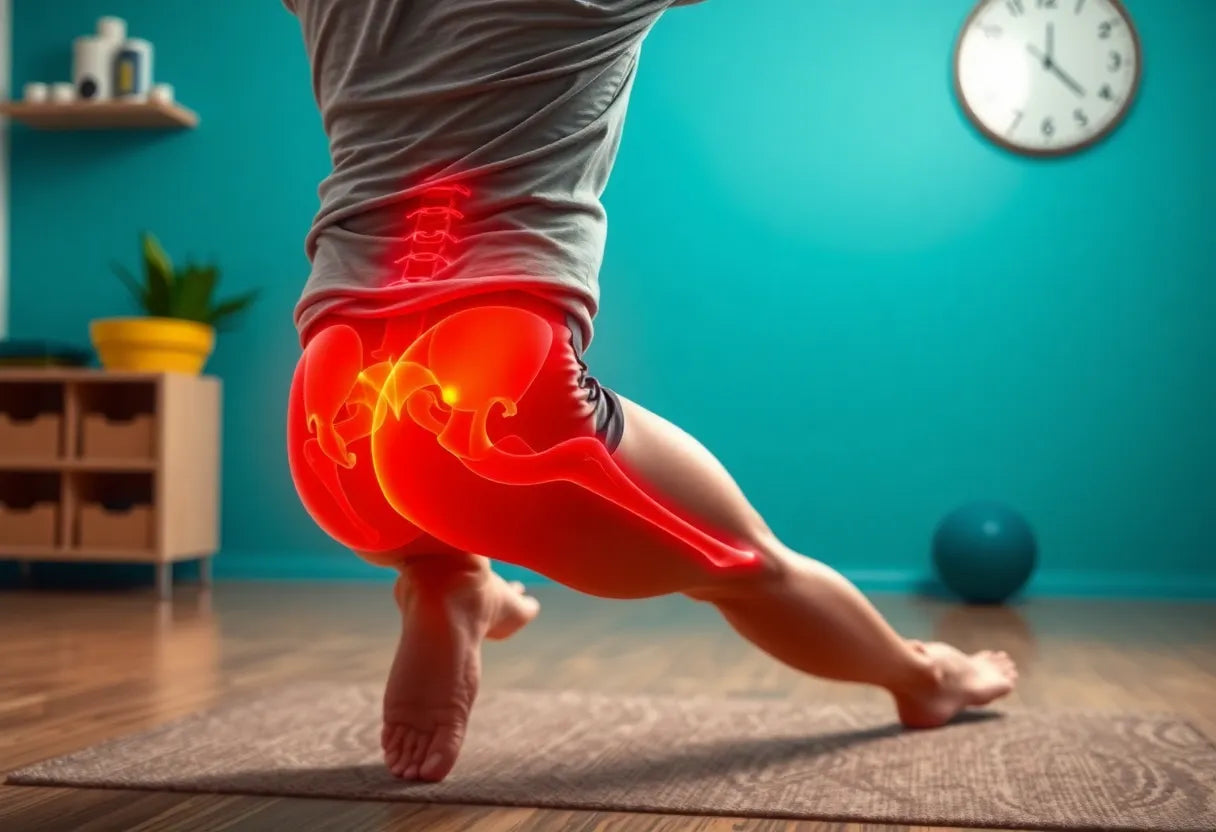Sciatica nerve pain is a condition that many people experience, yet it often remains misunderstood. It involves pain that radiates along the path of the sciatic nerve, which runs from the lower back through the hips and buttocks and down each leg. This discomfort typically occurs when the sciatic nerve is irritated or compressed, leading to symptoms that can vary in intensity and duration. Common causes of this nerve compression include herniated discs, spinal stenosis, and other spinal conditions that exert pressure on the nerve. Understanding why sciatica is so prevalent and what can be done to manage it is essential for those affected.
prevalence and impact of sciatica nerve pain
Sciatica is surprisingly common, affecting millions of individuals worldwide each year. In fact, studies suggest that up to 40% of people will experience sciatica at some point in their lives. This widespread prevalence highlights the importance of awareness and effective management strategies. The impact of sciatica on daily life can be significant, often hindering one's ability to perform everyday activities such as walking, sitting, or even standing for extended periods. The pain can also interfere with sleep, leading to further complications and a reduced quality of life.
purpose of this blog post
This blog post aims to serve as a comprehensive guide for those seeking to understand and manage sciatica nerve pain. By exploring its causes, symptoms, and various treatment options, readers will gain valuable insights into how to alleviate their discomfort and improve their overall well-being. Whether you are experiencing sciatica for the first time or have been dealing with it for a while, this guide will provide practical steps and strategies to help you find relief and regain control over your life. Stay tuned as we delve deeper into the symptoms, treatments, and lifestyle modifications that can make a difference in managing sciatica effectively.
symptoms of sciatica nerve pain
Recognizing the symptoms of sciatica is crucial for early intervention and effective management. The hallmark of sciatica is a distinct, radiating pain that typically begins in the lower back and travels through the buttock, down the back of the leg, and sometimes extends into the foot. This pain can vary from a mild ache to a sharp, burning sensation. Some individuals describe it as a shooting pain that can make standing or sitting difficult. Additionally, sciatica may be accompanied by tingling, numbness, or muscle weakness in the affected leg or foot.
Understanding these symptoms can help differentiate sciatica from other types of lower back pain. A visual representation of the sciatic nerve's path and common areas of discomfort can further aid in identifying the condition. Such diagrams typically illustrate the nerve's trajectory from the lower spine, through the pelvis, and down each leg, highlighting the areas most commonly affected by sciatica nerve pain.
conservative treatments and self-care strategies
exercise and stretching
One of the most effective ways to alleviate sciatica nerve pain is through regular exercise and stretching. Gentle movements can help reduce nerve compression and improve flexibility. Engaging in specific exercises tailored for sciatica can promote healing and prevent future flare-ups. Examples of beneficial exercises include hamstring stretches, pelvic tilts, and knee-to-chest stretches. These exercises not only relieve pain but also strengthen the core muscles, providing better support for the spine.

Lumbar support belt
Provides adjustable support and relief for lower back pain and sciatica.
A comparison of different exercises can highlight their respective benefits. For instance, hamstring stretches can improve flexibility, while pelvic tilts can enhance core strength. Incorporating a variety of these exercises into a regular routine can offer comprehensive relief and long-term benefits.
physical therapy
Physical therapy plays a pivotal role in managing sciatica nerve pain. A physical therapist can design a personalized exercise program that focuses on strengthening the core, improving flexibility, and correcting posture. These exercises aim to reduce the strain on the sciatic nerve and prevent recurrence. Physical therapy can also include manual techniques to relieve pain and improve mobility. The structured approach of physical therapy ensures that exercises are performed correctly, maximizing their effectiveness and minimizing the risk of injury.

Men's Posture Shirt™ - Black
Stimulates muscles and supports posture to relieve back pain and tension.
cold and heat therapy
Cold and heat therapy are simple yet effective methods for managing sciatica nerve pain. Applying an ice pack during the initial stages of a flare-up can help reduce inflammation and numb the area, providing immediate relief. As the pain subsides, switching to a heat pack can enhance blood flow to the affected area, promoting healing and reducing muscle tension.
For optimal results, it's important to apply cold and heat therapy correctly. Begin with an ice pack for 15-20 minutes several times a day during the acute phase. Once the initial inflammation decreases, transition to a heat pack for similar durations to soothe and relax the muscles.
medications and injections
In some cases, medications and injections may be necessary to manage sciatica nerve pain effectively. Nonsteroidal anti-inflammatory drugs (NSAIDs) are commonly used to reduce inflammation and alleviate pain. Muscle relaxants may also be prescribed to relieve muscle spasms associated with sciatica. For more persistent pain, nerve stabilizers or short courses of oral steroids may be recommended.
In situations where conservative treatments are insufficient, epidural or nerve root steroid injections can provide short-to-medium term relief. These injections help reduce inflammation around the nerve, facilitating physical therapy and improving mobility. However, it's important to weigh the pros and cons of each medication and injection option, considering potential side effects and effectiveness.
advanced treatment options for sciatica nerve pain
For individuals who do not find relief through conservative treatments, advanced options are available. Surgical interventions may be considered when sciatica nerve pain is severe, persistent, or accompanied by neurological complications such as loss of bladder or bowel control. Surgery aims to relieve pressure on the sciatic nerve and can include procedures like discectomy, which removes part of a herniated disc, or laminectomy, which enlarges the spinal canal to reduce nerve compression. Success rates for these surgeries are generally high, but they are typically reserved for cases where other treatments have failed.
lifestyle modifications and prevention
In addition to medical treatments, lifestyle modifications play a crucial role in managing and preventing sciatica nerve pain. Maintaining a healthy weight can reduce pressure on the spine, while regular exercise strengthens the muscles supporting the back. Additionally, practicing good posture and creating an ergonomic workspace can help prevent recurrence. Simple changes, such as using a chair with proper lumbar support and adjusting the height of your desk and computer screen, can make a significant difference in reducing strain on the sciatic nerve.
conclusion
Understanding and managing sciatica nerve pain involves a combination of recognizing symptoms, exploring treatment options, and making lifestyle adjustments. From conservative methods like exercise and physical therapy to advanced interventions including surgery, there are numerous strategies to alleviate discomfort and improve quality of life. It's essential to consult with a healthcare professional for a personalized approach, especially if symptoms persist or worsen.
frequently asked questions
What is the fastest way to relieve sciatica pain?
Quick relief from sciatica pain often involves a combination of rest, applying ice or heat, and taking over-the-counter pain relievers like NSAIDs. Gentle stretching and exercises can also help reduce nerve compression and alleviate symptoms.
Can sciatica go away on its own?
In many cases, sciatica can improve over time with self-care and conservative treatments. The typical timeline for recovery is a few weeks to a few months. However, if the pain persists or worsens, it's important to seek medical advice.
What sleeping position is best for sciatica?
Sleeping on your side with a pillow between your knees can help alleviate sciatica pain by aligning the spine and reducing pressure on the sciatic nerve. Alternatively, sleeping on your back with a pillow under your knees can also be beneficial.
Is walking good for sciatica?
Walking can be beneficial for sciatica as it helps improve circulation and reduces inflammation. However, it's important to walk at a comfortable pace and avoid uneven surfaces to prevent aggravating the pain.
When should I see a doctor for sciatica?
You should see a doctor if you experience severe pain, numbness, or weakness in the leg, or if the pain is accompanied by loss of bladder or bowel control. These symptoms may indicate a more serious condition that requires immediate medical attention.
Kilder
- Tylenol. "Sciatica Pain Relief." Tylenol.
- Stafford, M.A., Peng, P., & Hill, D.A. (2021). "Sciatica: A Review of History, Epidemiology, Pathogenesis, and the Role of Epidural Steroid Injection in Management." NCBI Bookshelf.
- Harvard Health Publishing. "Sciatica." Harvard Health.
- American Medical Association. "What Doctors Wish Patients Knew About Sciatica." AMA.
- Penn Medicine. "Sciatica." Penn Medicine.
- Cleveland Clinic. "Sciatica." Cleveland Clinic.
- American Academy of Orthopaedic Surgeons. "Sciatica." OrthoInfo.
- MedlinePlus. "Sciatica." MedlinePlus.
- Mayo Clinic. "Sciatica: Diagnosis & Treatment." Mayo Clinic.


















